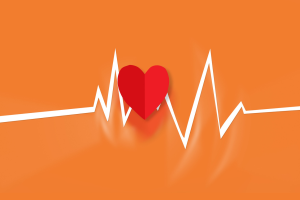Advice on Performing CPR During COVID-19 Pandemic

Both the Centers for Disease Control and Prevention (CDC) and the American Heart Association (AHA) have released updated interim guidelines on how to treat people who may have contracted the virus known as COVID-19 or Coronavirus. These guidelines involve general tips for treating those who may have been exposed to COVID-19 (regardless of the nature of their emergency) as well as guidelines specific to CPR procedures.
Because CPR procedures can generate aerosols, the CDC and AHA both want to focus on applying their updated recommendations to CPR specifically. Note that with these updated procedures in place, it may be in your best interest to take a reputable CPR course in order to ensure that you have the skills necessary to assist someone who is suffering from cardiac arrest or has stopped breathing.
General COVID-19 Precautions for Medical Professionals
To begin with, the CDC has released increased general safety guidelines (not specific to CPR) for medical professionals which should be strictly followed whenever possible. These guidelines focus on three main points:
- First, the new guidelines seek to limit how easily the contagion can enter medical care facilities, such as hospitals. This means that medical professionals should be screening patients for any respiratory problems or other symptoms related to COVID-19, such as a fever, prior to allowing them to enter the facility. Furthermore, this first point also urges healthcare professionals to encourage patient responsibility by offering reminders such as covering one’s mouth while coughing.
- Furthermore, the guidelines encourage healthcare workers to isolate patients who are exhibiting symptoms of COVID-19 as quickly as possible. Hospitals are urged to keep patients who may have contracted COVID-19 in separate rooms and have them use private bathrooms. In addition, the guidelines advise that healthcare workers prioritize airborne infection isolation rooms (AIIRs) for patients undergoing measures which may produce aerosols, such as CPR procedures.
- Finally, one of the main things that the new guidelines emphasize is to protect all healthcare personnel when dealing with patients who may have suspected COVID-19. This means that medical professionals and patients alike should apply increased preemptive health measures, such as hand washing. Furthermore, there should be barriers between providers and patients whenever possible, especially in triage areas. Lastly, this recommendation argues that facilities should limit the amount of staff administering care to any given patient, especially one who has suspected COVID-19.
In the current climate, these recommendations should be used by all medical professionals, regardless of the nature of the emergency. With COVID-19 running rampant throughout the United States, it’s extremely important that medical professionals pay strict attention to these guidelines in all situations, especially including those involving the need for CPR procedures.
Guidance for Medical Professionals Administering CPR
As previously mentioned, because CPR can generate aerosols, the CDC and AHA have released specific precautions for medical professionals providing CPR to people who may be suffering from COVID-19. The updated guidelines include the following precautions:
- Personal Protective Equipment (PPE), such as a mask (when not providing rescue breaths), gloves, and a medical gown should be used whenever possible.
- If possible, the CDC also recommends avoiding using equipment which generates aerosols, such as bag-valve masks and nebulizers. In addition the CDC urges avoiding procedures which can cause aerosols, such as non-invasive positive pressure ventilation.
- Furthermore, it is advised that medical professionals wear a respirator or facemask (if a respirator is not available) before entering a patient’s room or any area where they’re being treated.
- Additionally, in order to keep providers safe, it’s recommended that N95 respirators or respirators that offer a higher level of protection are used instead of a face mask during aerosol-generating CPR procedures if at all possible.
- Furthermore, if it is known or suspected that a patient has COVID-19, then that patient should be cared for in a single-person room with the door closed.
- Moreover, airborne infection isolation rooms (AIIRs) should be reserved for patients undergoing aerosol-generating procedures, such as those which are sometimes required for CPR.
- Also, the CDC recommends that only providers who are essential to patient care and and the overall support of the procedure should be present when CPR is being administered.
- Finally, the CDC emphasizes the fact that the patient’s room should be thoroughly cleaned and disinfected following their CPR procedure.
Guidance for Bystanders Administering CPR
Finally, the CDC has also released guidance for bystanders who need to offer CPR to someone who may be infected with COVID-19. In addition, during this uncertain time, even if a bystander does not know whether or not the victim has been exposed to COVID-19, they should still apply these guidelines.
- As usual, it’s important that the first thing you do when beginning CPR procedures is to have someone call 911 and see if there is an automated external defibrillator (AED) nearby that you can use.
- Next, in light of the COVID-19 situation, it’s important that you actually cover your own mouth and nose using a cloth or a face mask (if you have one available). This means that you will not be able to offer rescue breaths, which are typically a part of CPR procedures. However, the CDC is currently recommending hands-only CPR for bystanders.
- Additionally, it’s important that you cover the victim’s mouth and nose with a cloth or face mask as well.
- Finally, you must administer hands-only CPR. This means focusing on chest compressions. Press hard and fast in the center of the victim’s chest at about a rate of 120 compressions per minute until medical professionals arrive.
Note: The above guidelines are specifically for adult CPR. The CDC does recommend that if you are performing CPR on an infant or child, you still offer rescue breaths if you are willing and able.
Conclusion
It’s important that we all pay attention to updated interim guidelines for CPR care and medical care in general during these uncertain times. In order to ensure that you’re prepared in the event of an emergency which requires CPR, look into a trustworthy CPR certification course today. You will receive the skills necessary to potentially save a life and will feel more confident about your abilities in the midst of the COVID-19 pandemic.






